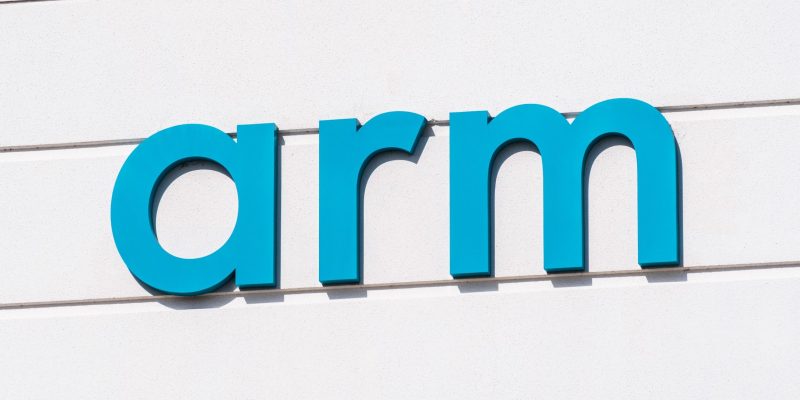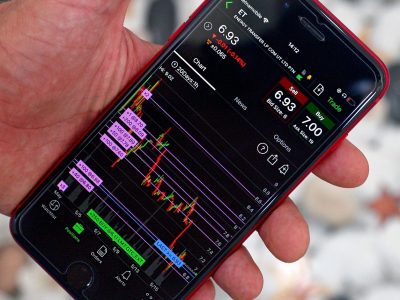
Analysts at Morgan Stanley just elevated Arm Holdings (NASDAQ: ARM) to their top large-cap pick, highlighting a strong belief in Arm’s growth prospects, particularly in mobile recovery and emerging edge AI opportunities.
Morgan Stanley maintained an Overweight rating with a $175 price target, reflecting their confidence in Arm’s ability to capitalize on the expanding edge AI market, driven by its v9 architecture’s integration into Apple’s iPhone 16 and other high-performance devices.
Analysts forecast a 35% compound annual growth rate (CAGR) in Arm’s mobile segment from FY24 to FY27, with further momentum expected from autos and infrastructure.
The recent launch of Apple’s iPhone 16, featuring Arm’s v9 architecture in the A18 chip, is a significant milestone.
The v9 cores are expected to drive substantial growth, particularly in the mobile segment.
With an anticipated 230-260 million iPhone units to be shipped in FY26, Arm’s royalty revenue is poised for a robust expansion.
Morgan Stanley emphasized Arm’s pivotal role in the shift to edge AI, where the company’s silicon IP is increasingly being utilized in custom silicon work across various sectors, leading to higher royalty rates over the next two to three years.
Arm Holdings’s earnings
Arm’s Q1 earnings, though solid, were met with mixed reactions. The company reported a 39% year-over-year revenue increase to $939 million, beating expectations by $32.5 million.
However, the guidance for Q2 FYE25 came in slightly below consensus, with revenue expected to be between $780 million and $830 million, and earnings per share (EPS) in the range of $0.23 to $0.27.
Despite this, Arm reaffirmed its full-year outlook, projecting revenue between $3.8 billion and $4.1 billion and adjusted EPS of $1.45 to $1.65.
This guidance, while strong, reflects a deceleration from the previous quarter’s impressive growth, raising concerns about the sustainability of the momentum.
Arm Holdings’s licensing and royalty model
On the fundamental front, Arm continues to demonstrate its dominance in the semiconductor industry.
The company’s revenue is primarily driven by its licensing and royalty model, with a notable increase in license revenue by 72% year-over-year in Q1, reaching $472 million.
Royalty revenue, which grew 17% year-over-year, remains a critical component of Arm’s business, particularly with the rising adoption of the v9 architecture.
The v9 architecture commands higher royalties, contributing to a significant portion of Arm’s revenue growth.
Arm’s strategic partnerships with tech giants like Nvidia, Microsoft, and Amazon further bolster its revenue streams, as these companies increasingly rely on Arm’s designs for their advanced AI and data center needs.
However, Arm is also facing several headwinds. The competitive landscape in the semiconductor industry is intensifying, with rivals like Intel and AMD gaining ground in certain segments.
Additionally, geopolitical risks, particularly related to China, pose potential challenges for Arm’s revenue growth.
The company’s exposure to export controls and the uncertainty surrounding US and UK regulatory approvals could impact its ability to do business in China, which accounted for 14% of its revenue in FY24.
ARM’s stretched valuation
In terms of valuation, Arm is currently trading at a premium, with a forward price-to-sales (P/S) ratio of 33.56, significantly higher than the sector median.
This high valuation reflects the market’s expectations for Arm’s continued growth in the AI and semiconductor markets.
However, some analysts argue that Arm’s growth may not fully justify its current valuation, especially when compared to other high-growth semiconductor companies like Nvidia and AMD.
While Arm’s revenue is expected to grow at a robust rate, the stock’s high multiple leaves little room for error, making it vulnerable to any potential downturns in performance or market sentiment.
Now, let’s see what the charts have to say about the stock’s price trajectory.
With the fundamentals and valuation in mind, a closer examination of Arm’s technical indicators will provide further insight into whether the stock’s current price levels are justified or if there are potential entry points for investors looking to capitalize on Arm’s future growth.
Bullish momentum returns on short-term charts
Although Arm’s stock has fallen significantly from its peak of $188.75 made in July this year, it has bounced back from lows of under $100 made earlier last month and is displaying bullish momentum on the short-term charts.
Source: TradingView
Taking that into account, investors who are bullish on the stock can initiate a long position at current levels with a stop-loss below $106.5. If the bullish momentum intensifies, we can soon see the stock trading above $172.
Traders who are bearish on the stock must wait for it to fall below the $106.5 level again and start exhibiting weakness before initiating a fresh short position.
The post Arm Holdings is Morgan Stanley’s new top pick: should you buy? appeared first on Invezz









